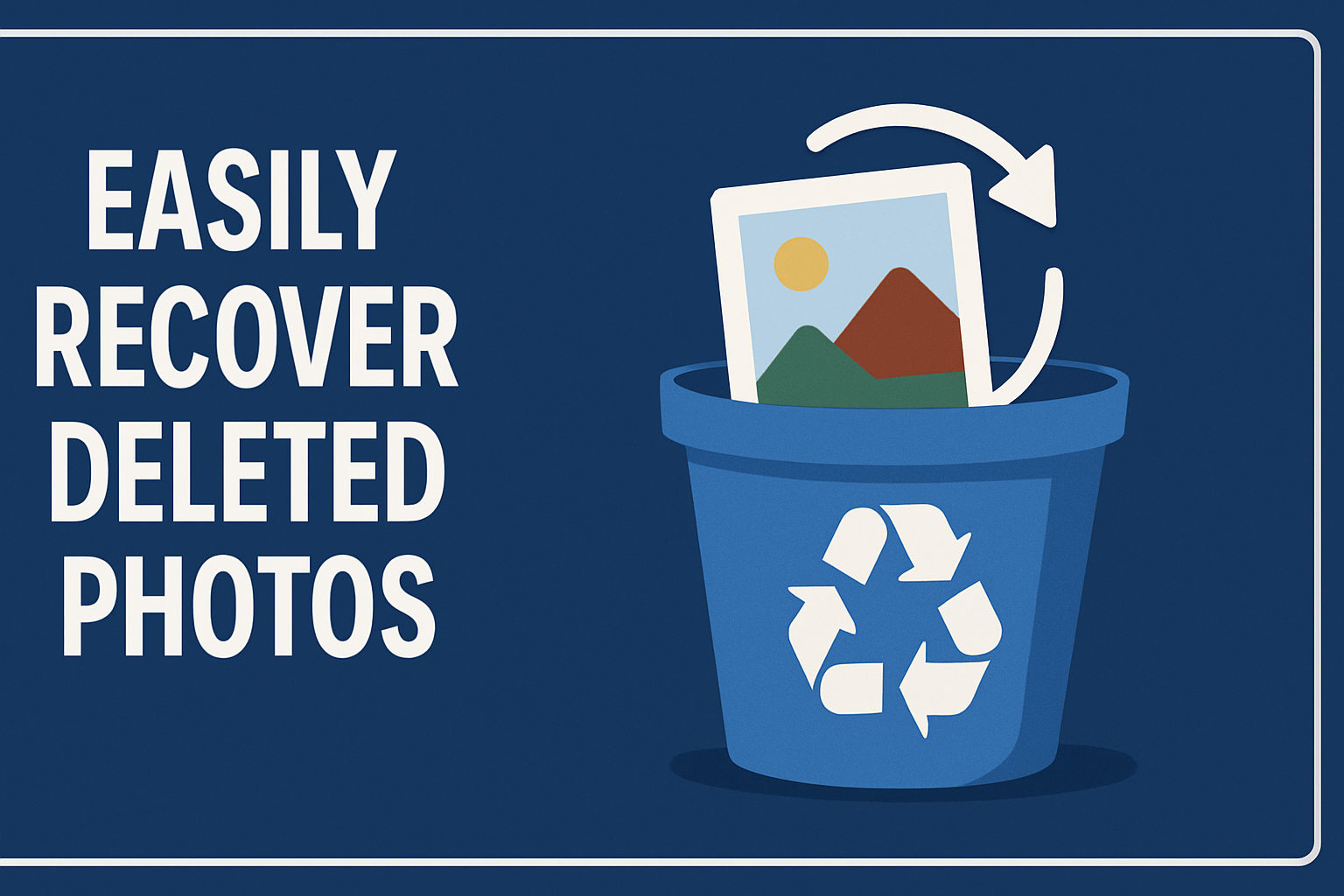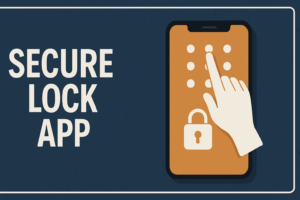Photos are a wonderful way to preserve the sweet moments in our lives. A single picture can remind us of many memories. But it is natural to feel upset if those photos are accidentally deleted. Anyone looks at their phone or laptop with guilt – “Will these photos ever be found again?” The worry arises. But in this era, with the development of technology, it is possible to recover deleted photos.
Even if photos are accidentally deleted, they do not disappear completely. They sometimes disappear from the file system but may still be present in the internal storage. Those who understand this can succeed in photo recovery. Especially if you take action before any data is overwritten, the chances of recovering the photos are high.
As soon as you delete photos from the phone’s gallery, they are often in a folder called “Recycle Bin” or “Recently Deleted”. If you look at that folder, you may find that the photos have been saved there for a few days. You can select them and use the “Restore” option to recover them. This works in most cases, especially on smartphones, especially for those using Android or iPhone, and is an easy first step.
Another key way is that if the photos are saved to cloud storage when they are taken, they are still available there. Services like Google Photos, iCloud, and OneDrive automatically back up photos. In some cases, even if we delete a photo from our phone, it may not be deleted in the cloud. That is why we can go into our accounts and download the photos again.
But if the photos cannot be found through these two methods, we will have to give a chance to specialized data recovery software. Tools like Recuva, DiskDigger, EaseUS Data Recovery Wizard are important among them. These scan the deleted data in depth and try to recover it. If it is believed that no new data has been written to the phone or memory card, it is very possible to recover photos with the help of these tools.
However, caution is required when using recovery software. If we install the software on the same storage as the data, it will overwrite the data and permanently damage the previous data. Therefore, it is best to install the tool on a different device if possible and then recover it. Also, some recovery tools say that the premium version is required for full results, so we should carefully consider and choose.
There is no need to despair if the photos are not recovered. Some precautions are essential to prevent such incidents in the future. In particular, it is a good idea to turn on the setting to back up to cloud storage immediately after taking photos, copy photos regularly, and be extra careful when deleting unnecessary photos. Although all these are simple, they have the potential to protect our sweet memories indefinitely.
These days, we want every photo we take to remain a mark in our lives. Be it family, friends, or a travelogue. To never lose such precious moments, it is essential to be aware of data recovery methods and digital security. This is essential information for everyone.
If you need any more explanation about what to do when there are any special cases, or when the photos cannot be recovered, let me know. I will explain both technically and practically.
Even if the photos seem to be completely deleted, in many cases they are lurking in an invisible corner of the storage. Not only that, but the way data recovery software works is also based on this. They scan the storage space and try to recover the files that have not been completely deleted. In some cases, the photos are partially recovered, meaning that only a part of them can be displayed, or they come as a damaged file. This can happen for a number of reasons - the main reason being that new files are occupying that space. That is why it is very important to try recovery immediately after deletion.
While the methods discussed so far are digital, in some cases professional help is needed. Especially in cases of hard drive failure, or memory card damage, normal recovery tools may not work. In that case, you have to take the help of data recovery centers. They can examine the hardware level and, if necessary, perform micro-level data extraction. However, this is a costly process. But for valuable, unforgettable memories, some people must take it.
Even small mistakes we make when trying to recover photos can lead to big losses. For example, taking photos on the phone after deletion, or installing new apps, or playing videos, can reduce the chances of recovery. In addition, sometimes apps like "clean up apps" or "junk remover" can also completely delete temporary files in the storage. Therefore, caution is also required when using such apps.
Another important point — whenever we take photos, we should not keep them in the same storage. It is better to keep a copy in the phone storage as well as in the memory card or cloud storage. This creates data redundancy and increases security. Also, there are chances of data loss due to sharing or downloading files over unsecured networks like open public WiFi. These are all things that we usually ignore, but they are very important when needed.
In other words, the desire to recover a photo indicates how much love we have for that memory. While it may seem like it is enough to keep some memories in mind, the joy of having the opportunity to see them as a picture is different. Therefore, it is very important to back up our photos regularly to keep them safe, use the right tools when necessary, and stay away from suspicious apps. It is also a great responsibility to protect our memories from being lost immediately.
If you want, I can also explain how to recover in special cases, for example, from a phone that got wet, from a formatted memory card, or how to recover photos after a system crash. Tell me which direction you think is better — I will take it into account and help in detail.
All the above mentioned things are useful for solving the digital problems that we face every day. But in some special situations, recovering photos becomes more complicated. For example, if the phone does not boot completely, or the screen does not work, it is difficult to access the photos normally. At such a time, we need to connect the phone to the computer via USB and use software that is capable of transferring data. However, before this, we need to enable “File Transfer Mode” on the phone. This is not possible if the screen does not work. Then we are left with the only options, such as connecting a mouse via an OTG cable and navigating the screen.
Some people need to get photos from their old phone or digital camera storage. In such a case, even if the phone does not work, most people try removing the memory card and putting it in another device. This sometimes works. But if the photos still do not appear, it is possible that the card is damaged. In that case, special card readers or recovery tools may be needed. SD cards can sometimes appear in “RAW” format. This means that the computer cannot recognize the card. But some advanced tools can recover files even from RAW drives.
Another type of problem is data loss caused by formatting phones. Many people format their phones thinking that they are slow or that they have run out of storage. But without taking a backup, all the photos and videos on them are lost. This is a very common but annoying problem. In such cases, recovery is possible, but it may not give 100% results. Some photos may only be recovered in a damaged form. That is why it is very important to save important files like photos and documents separately before formatting.
Another case — photos are deleted due to a virus on the phone. Some malicious apps or viruses can cause files to be lost. Some types of malware hide files and make them invisible. In that case, we should first scan the device using any antivirus. In addition, if we connect the phone through a computer and change the setting to show “hidden files”, some photos may be visible again. Although this is not common, it can be a great relief for those who have lost their data.
If the hope of recovering photos is true, it requires proper effort and due care. Sometimes a small mistake we make – for example, selecting “permanently delete” or using the “format all” option – can permanently erase our photos. But technology is evolving so that there is a solution to every problem. So if we know what we have lost, observe the tools available to recover it, and react at the right time, we can get our precious memories back.
When we look at it all, recovering photos becomes not just a technical matter, but an emotional one. The photos we take with great love – images that remain as a memory, an attachment – hold a special place in our lives. The effort to preserve them is a reward for how responsible we take them and how much we care for our memories.
If you want to know more about any specific situation, tool, or step-by-step process, let me know. I will provide meaningful details according to your needs.
Of course, I will continue. A key element in this “photo recovery” process — our mindset. That is, even if the photos are completely lost, if we think calmly without any haste or worry, we will be able to find ways to recover them. Because hasty decisions, especially actions such as adding new files to the storage, completely occupy the space of the original deleted photos, making them impossible to recover. So if we have a little understanding from the first minute, it is possible to recover photos many times.
Even if we cannot recover photos, the effort we have made should not be in vain. Because that effort will teach us how to take care of ourselves in the future. It becomes clear how important it is to back up our files. Technology gives us many opportunities – but we must know how to keep them in our hands. Not only photos, but we also have documents, audios, videos – all these are also emotions related to an occasion in life. The loss caused when these are lost cannot be measured by the value of any device.
Currently, some phone brands and Android versions are trying to enable automatic backup. When we buy a new phone, services like Google Photos or iCloud are set to send our photos to the cloud during the initial setup. Since most people don’t use it, many people don’t even realize that the feature exists. But once the phone is updated or when we switch to a new phone, it can be very useful. Even if the phone is lost or formatted, our photos are protected as long as there is a backup in the cloud.
Coming to another thing that we can’t forget, our photos are not just memories that we remember – we also have the hope of showing them to our future generations. The saree that an aunt wore during Navratri, the plant that a grandfather planted, the photo taken on the day an older brother went to school for the first time — all these are forms of telling our family stories. When such things are lost, it’s not just the loss of files — it’s the loss of an inheritance. That’s why, every time we take a photo, we should adopt the philosophy of carefully storing it.
All in all, losing photos may seem like a small thing, but when you look at the solutions, experiences, and emotional states related to it, it is an important chapter in our personal lives. Being aware of technology, being careful, and taking the right solution when necessary — all these are key steps on the way to preserving our memories.
This is not just information like other topics, but an experience that is connected to everyone's life. When you are writing something like this — it is not just reviving dead data, but an attempt to bring back an entire life. If you want any more angles, examples, or something deeper, let me know — I will take it forward.








